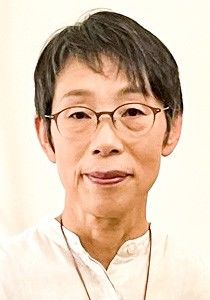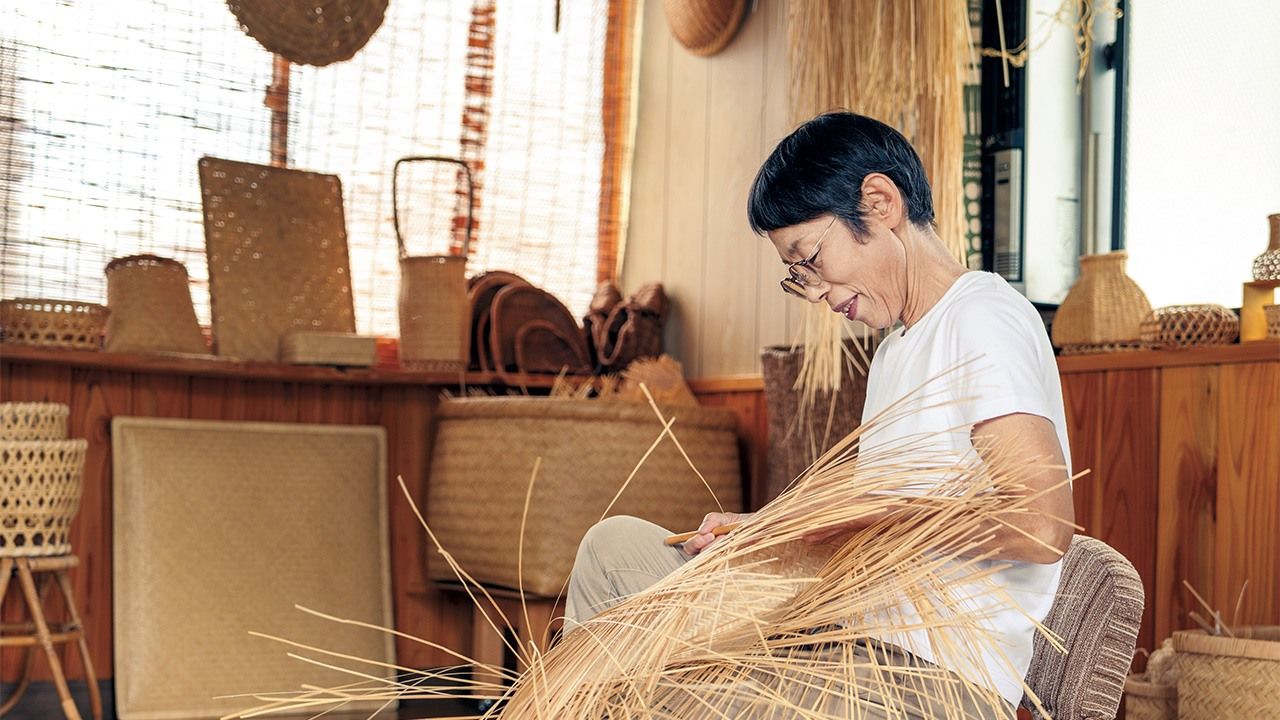
“Cool Traditions” Stay in Tune with Modern Life
Weaving the Future of a Traditional Past: Torigoe Bamboo Artisan Shibata Megumi
Culture Arts Environment- English
- 日本語
- 简体字
- 繁體字
- Français
- Español
- العربية
- Русский
Simple, Useful, Beautiful
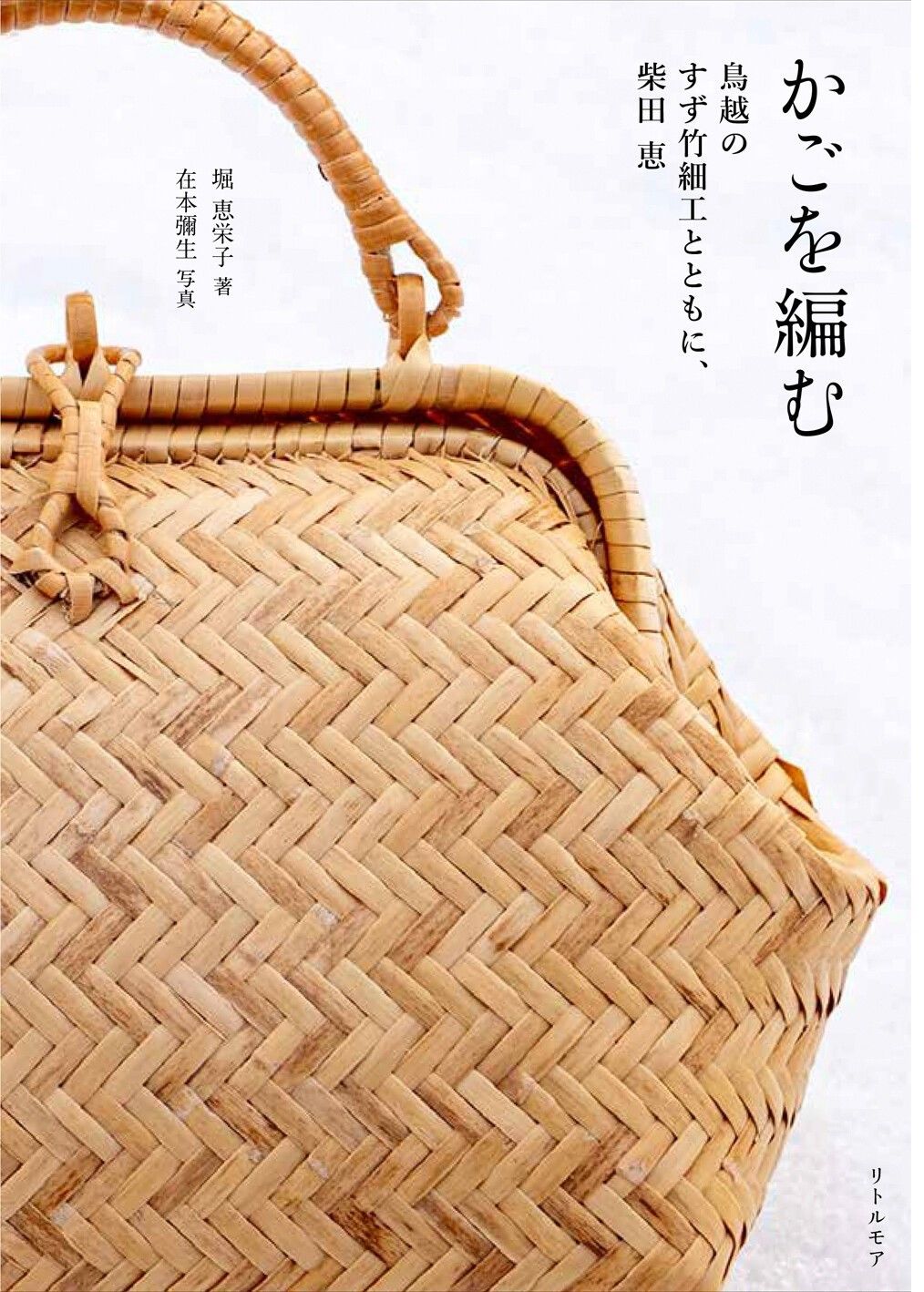
Published in May 2024, Hori Kēko’s book, with photography by Arimoto Yayoi, features Shibata Megumi’s original designs based on Torigoe bamboo weaving.
A small gallery in Tokyo recently held an exhibit on bamboo weaving from the small community of Torigoe in Iwate Prefecture. The show was a valuable chance to see creations by Shibata Megumi, a leading figure in the Torigoe handicraft tradition, which boasts roots stretching back more than 1,000 years. Once a thriving industry, Torigoe bamboo weaving has dwindled, and now only a handful of artisans still produce the bags, baskets, and other everyday items that Torigoe is famous for.
The exhibit was held at Gallery Keian, a cozy venue tucked away in a residential area of Bunkyō in the center of the capital. Owner Hori Kēko, with a passion for wicker art, opened the exhibition space in a corner of her home to showcase different weaving traditions from around Japan.
Shibata is the leading figure in efforts to preserve the Torigoe bamboo weaving tradition. Longtime friends, Hori and Shibata in 2023 launched a crowdfunding campaign to publish a book highlighting the history and beauty of Torigoe bamboo handicraft, raising awareness and fostering appreciation of the ancient art.
There is much to admire about Torigoe weaving. Bags and other items made in the style are beguilingly light, wonderfully pliable, and elegantly designed. They are also extremely durable, with the tightly woven strips of bamboo, at first honey yellow, maturing to an amber hue with time and use.
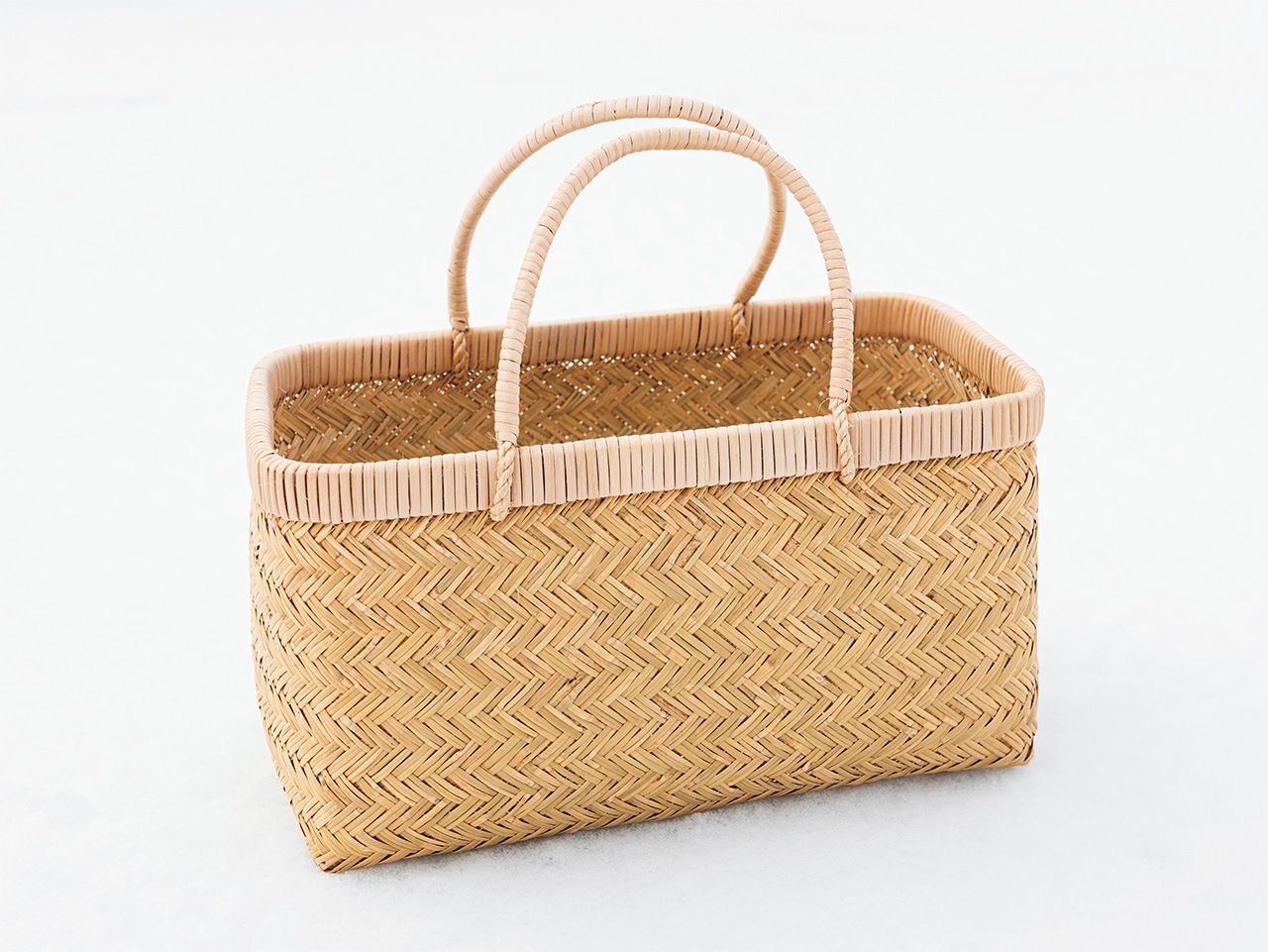
A Torigoe bamboo handbag. (© Arimoto Yayoi)
Torigoe bamboo craft uses suzutake, a type of dwarf bamboo native to Japan and other parts of Asia. Shibata explains that the variety has long been a vital resource for making the familiar tools of rural life—everything from draining baskets for noodles to bentō boxes to farm baskets used in fields. “I grew up surrounded by it,” she declares. Lauding the sturdiness of the weaving style, she insists that most items will last for decades.
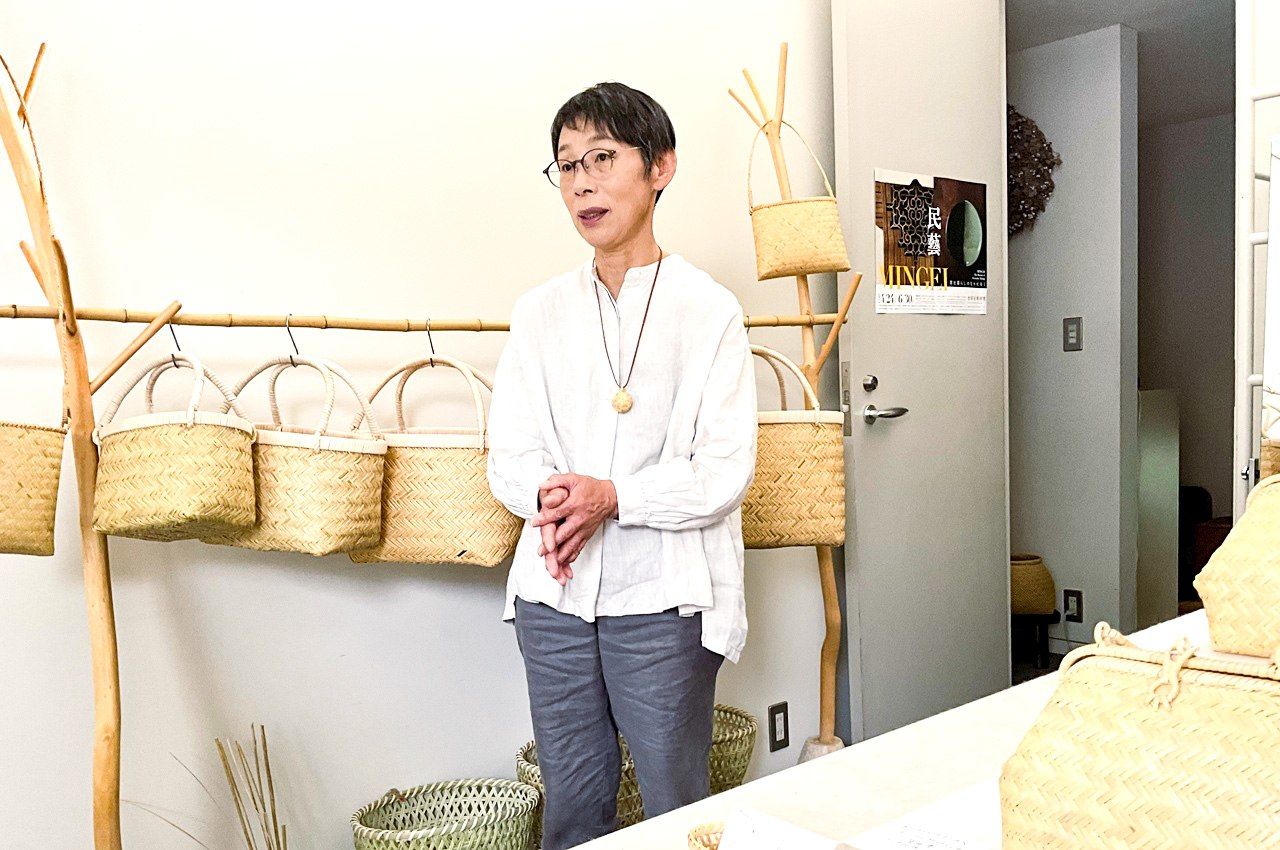
Shibata Megumi during an exhibit of her work at Gallery Keian. (© Nippon.com)
The beauty and practicality of Torigoe bamboo weaving won the approval of Yanagi Sōetsu (1889–1961), a leading figure of the mingei folk arts movement. Impressed by the practical nature of items, Yanagi praised the tradition as epitomizing yō no bi (用の美), a concept encapsulating the beauty intrinsic in the crafts themselves and in their usage in daily life.
The show at Gallery Keian spanned eight days and served to highlight the growing interest in Shibata’s creations. A large-scale mingei exhibition currently touring Japan also features a selection of her works.
In a world awash in mass-produced items, Torigoe bamboo weaving draws people with its quality and handmade craftsmanship. However, the tradition, like so many other folk crafts, is facing an existential threat to its survival as the population of artisans dwindle with age, a situation that is deeply intertwined with the history of Torigoe and the characteristics of suzutake bamboo itself.
Roots of a Tradition
Torigoe is nestled in the mountains of northern Iwate in the municipality of Ichinohe. For generations, farmers in the area have made bamboo goods for their own use and as a means to supplement their meager incomes. In the early 1950s, Torigoe led Japan in the production and sales of suzutake bamboo items, becoming nearly synonymous with the handicraft. In the community today, though, there is little indication of its rich cultural legacy, with the only discernable landmark amid Torigoe’s lush forest being the large red torii of Torigoe Kannon (which, despite its Buddhist-sounding name, is primarily a Shintō shrine).
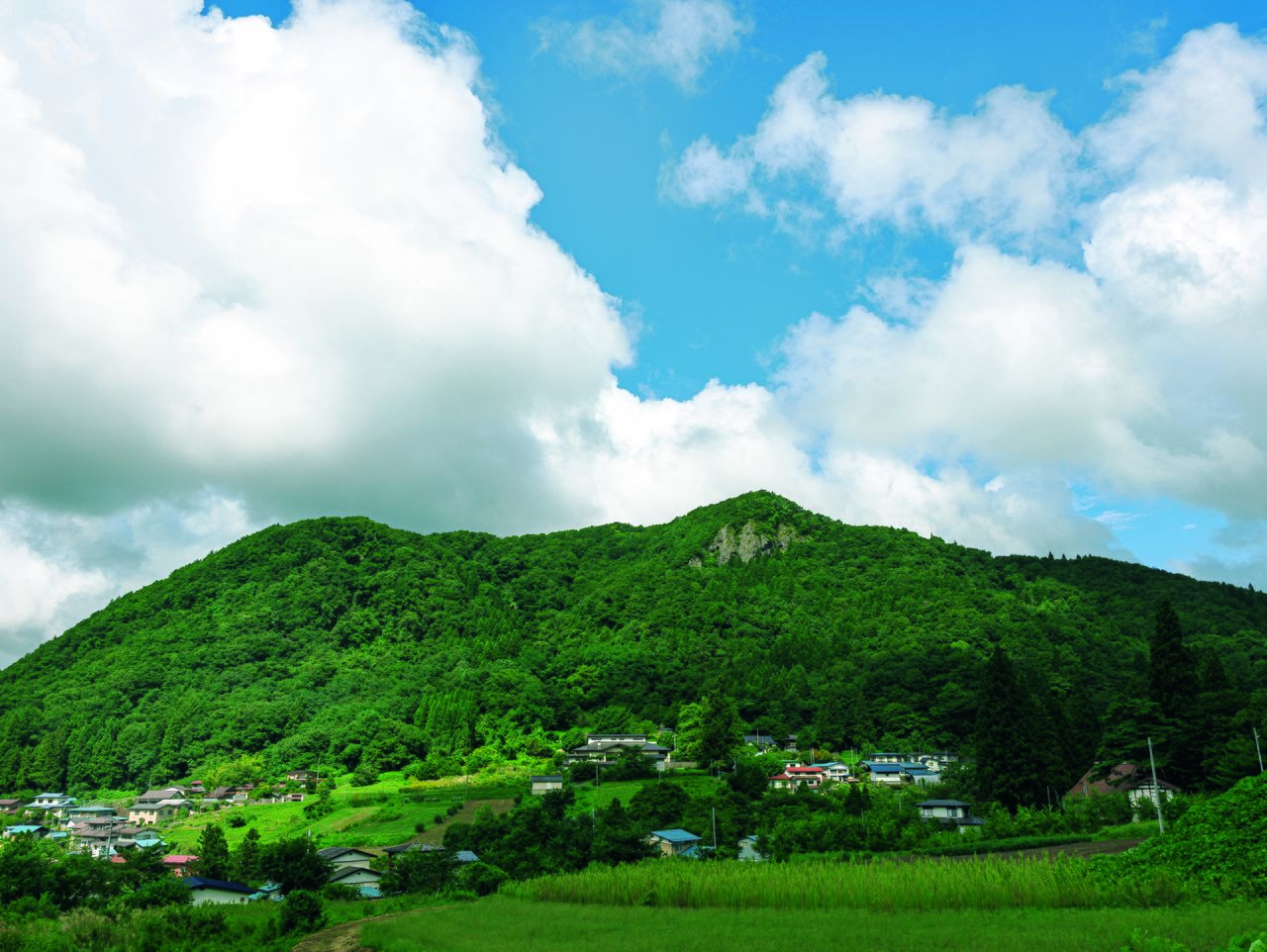
Mount Torigoe shimmers in the Iwate sunshine. (© Arimoto Yayoi)
The temple giving the site its name, dedicated to the bodhisattva Kannon, is said to have been founded in the early ninth century by the priest Ennin (794–864). A leading religious figure of his day, Ennin is also credited with introducing bamboo weaving to the area. Local legend tells how during an epidemic, the monk encouraged residents to pray to Kannon and forbade them from consuming meat. The latter proved problematic, as hunting supplemented the meager diets of the farming community. To compensate for the loss of sustenance, Ennin is said to have introduced bamboo weaving as a means for residents to support themselves.
The story is likely apocryphal, as archeological evidence from excavations at nearby Goshono, which is part of the UNESCO World Heritage listing of ancient sites in northern Japan, includes items made from woven suzutake that date to the prehistoric Jōmon period. This has not impacted Shibata’s reverence for the Kannon, though, which remains as firm as ever.
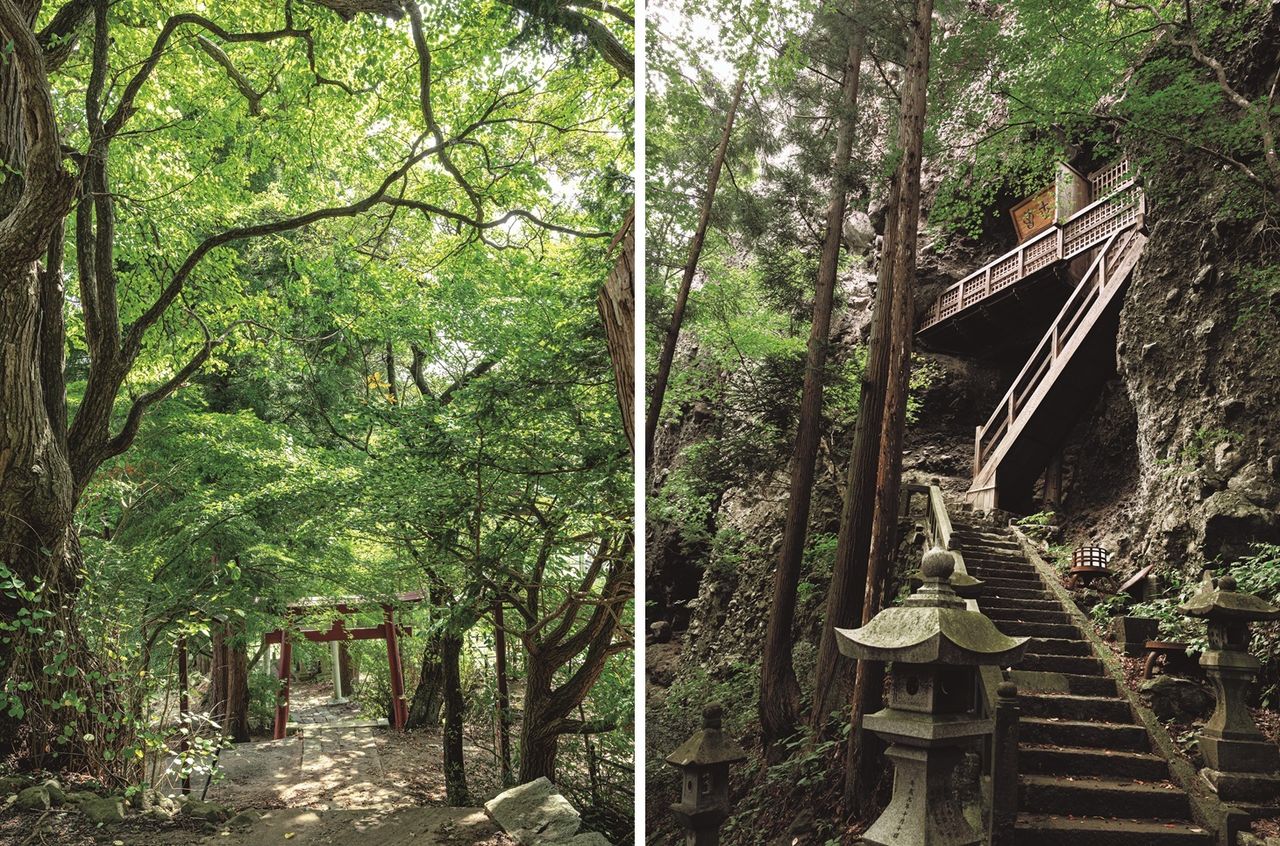
The worshiper’s path (left) and the steep staircase of the Torigoe Kannon’s Okuno-in. (© Arimoto Yayoi)
For Shibata, the tradition of bamboo weaving is intricately intertwined with the Torigoe Kannon. She rises early on the monthly holy days associated with the bodhisattva of compassion and mercy and travels to the temple to pay her respects, noting that she also pays heed to Buddhist precepts against eating meat, even to the point of not consuming soup stock produced with niboshi dried fish.
She recounts how in the past, resident spent the long, hard winters weaving items to sell. “The whole family was involved—kids, parents, and grandparents. Folks had to earn a living, so there wasn’t time to teach techniques. You just picked it up by watching and doing.”
A Critical Resource and a Cyclical Threat
The weaving process starts with a trip into the surrounding forest to collect bamboo, something that Shibata says she learned to do by helping her father. Suzutake is much thinner than other types of bamboo, only around 1 centimeter in diameter, and several stalks are needed to make even simple items, making the excursions time-consuming and tiring endeavors.
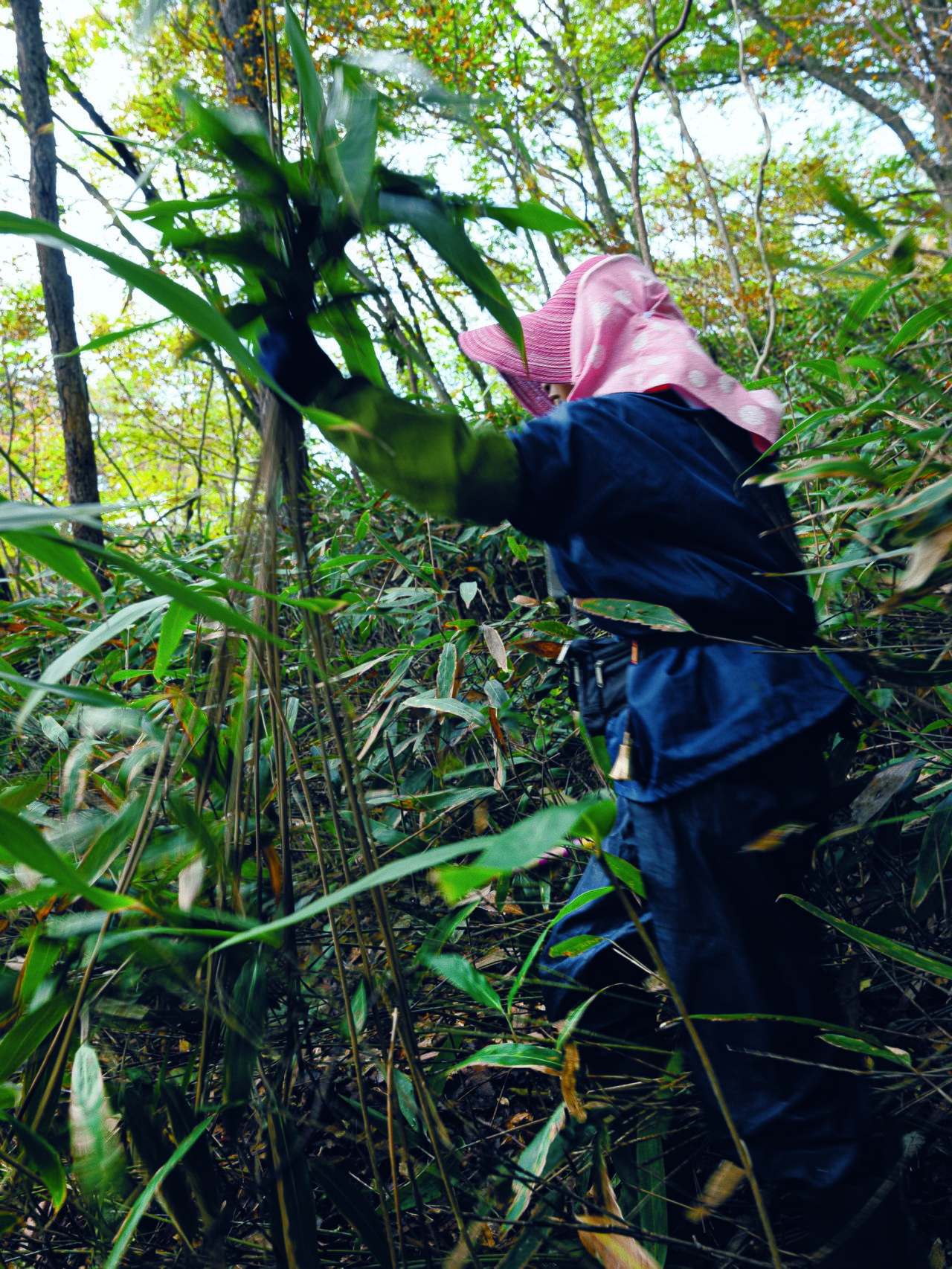
Collecting suzutake in the forest. (© Arimoto Yayoi)
Shibata says that the quality of bamboo varies from stand to stand, requiring that she scour the mountainsides for suitable material. “People don’t typically make a fuss if you trek onto their land,” she notes. “In the past, I’d carry a woven basket as a gift in case I met up with the owner of a property.” Chuckling, she adds that “I’ve switched to giving out gift certificates, as baskets are too valuable now.” Aside from run-ins with landowners, Shibata also has to be on the lookout for giant hornets and bears when in the woods.
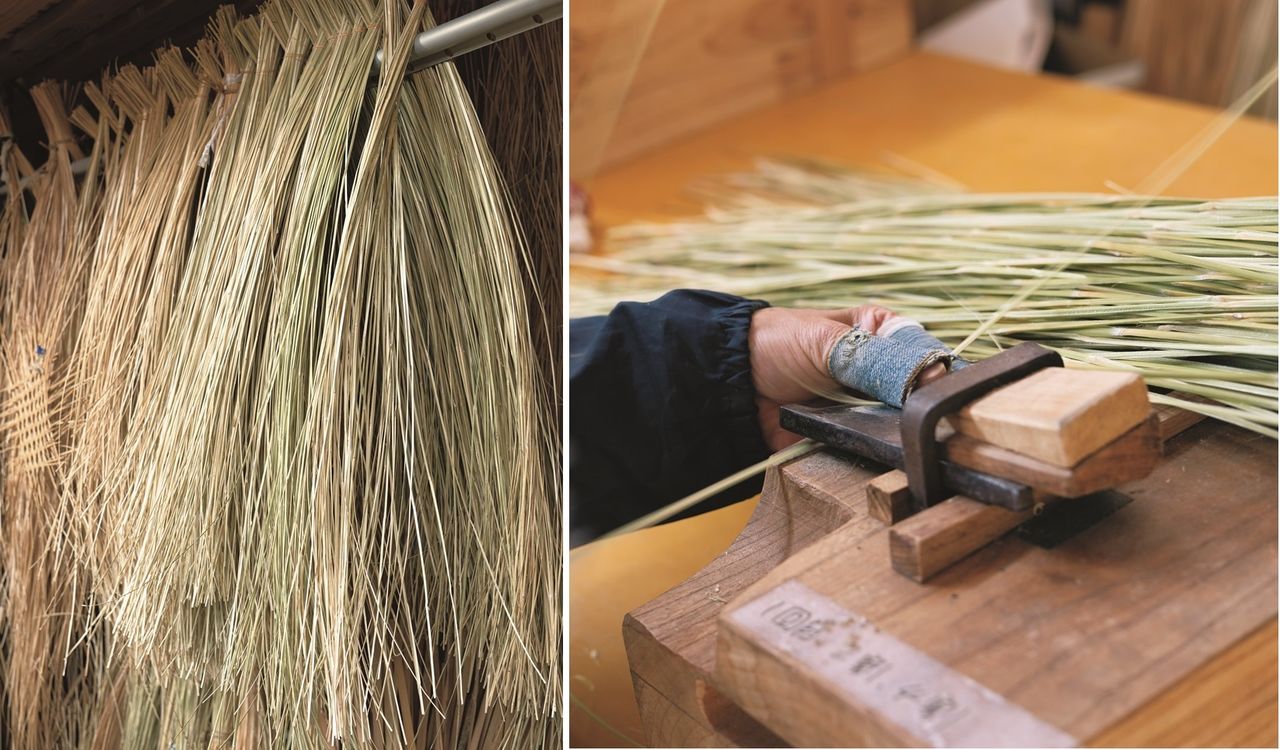
After harvesting, the bamboo is peeled, cut into strips, and allowed to dry (left) before it is shaved down to a uniform thickness using a special device. (© Arimoto Yayoi)
More worrying than forest creatures, though, has been the rapid loss of bamboo stocks. Since around 2018, suzutake in the Torigoe area has been withering at an alarming rate. Records show a similar occurrence in the 1780s and again in 1897, suggesting die-offs happen every 120 years or so. Little is known about what triggers the phenomenon, and experts warn that it could take as many as 20 years for the bamboo to fully recover.
This is deeply troubling news for Shibata. “Twenty years is a long time, and there’s no guarantee that climate change won’t worsen the situation,” she says with concern. Given the current challenges that Torigoe already faces, a pause of that length would spell almost certain doom. Still, Shibata is determined to overcome the crisis. “I’ve cut back on the number of items I make to extend my stock of suzutake—I should have enough to last me another year or two. If I have to use a different variety of bamboo to tide me over, then so be it.”
Changing to Fit the Times
For Shibata herself, as in her material of choice, resilience is a virtue. Long before the current troubles, she recognized the need to bring the designs of her creations into line with the changing needs of customers. To this end, she has come up with items like a wallet-sized shoulder bag capable of holding a smartphone and different styles of bags based on classic and popular designs.
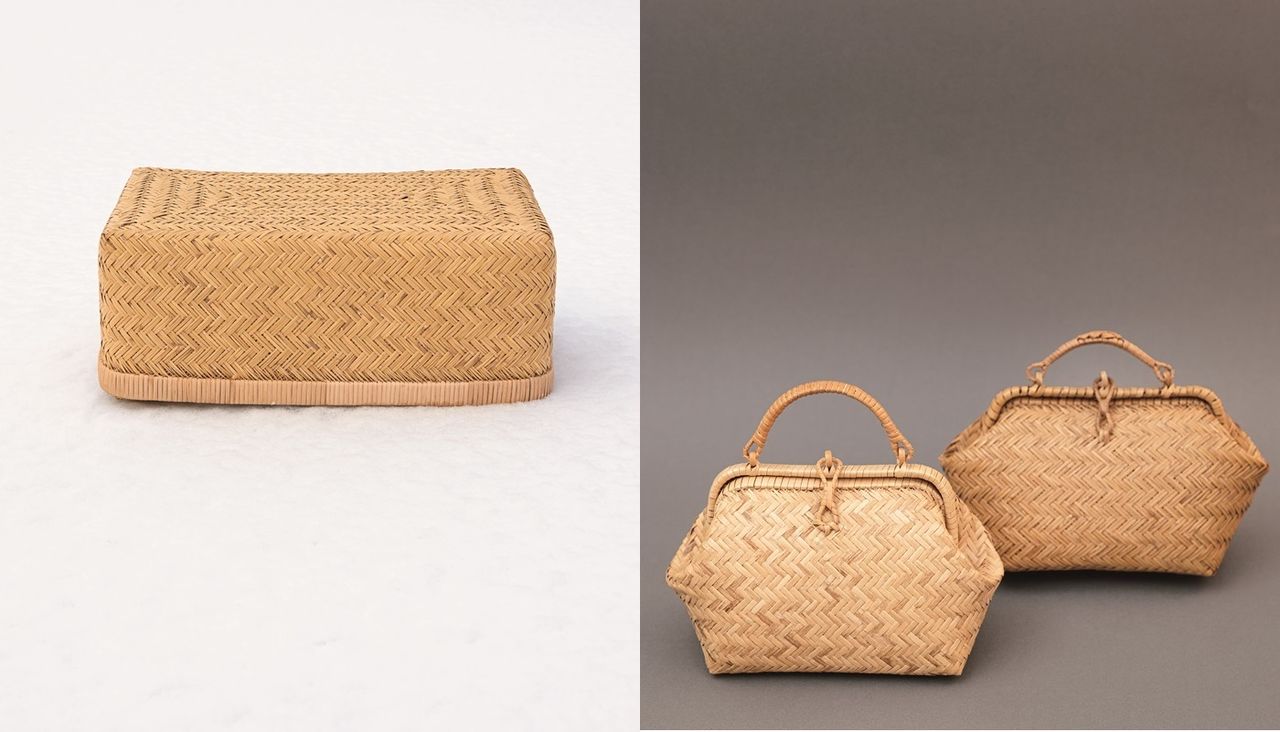
Shibata’s creations range from traditional items like kōri storage baskets (left) to fashionable handbags inspired by the “M-style” items produced for export in Matsumoto, Nagano Prefecture, a century ago. (© Arimoto Yayoi)
“Artisans typically have certain items that they specialize in,” Shibata explains. “I’m somewhat different in that I don’t have any one field that I focus on. I make large baskets, colanders, handbags—whatever.” Shibata insists that this gives her the freedom to be imaginative in her designs. “My creativity is my strong point.”
A Personal Undertaking
Torigoe bamboo weaving runs in Shibata’s family. Both of her parents were accomplished artisans, although she herself did not initially intend to carry on the tradition. However, her mother’s sudden illness when Shibata was in her 30s changed everything.
Shibata had married, moved away from Torigoe, and was caring for her young family when her mother collapsed. She made the difficult decision to return home, but coming back to weaving after so many years away was challenging. Complicating matters was her mother’s diminished ability to communicate her skills and knowledge. “Her physical condition—she had become paraplegic at the time—made it difficult for her to demonstrate techniques to me,” recounts Shibata. “She tried to describe things, but weaving was second nature to her, so her explanations went right over my head.”
Looking back, Shibata regrets not learning more from her mother while she could, but says that even after so many years away, she discovered that many of the skills she had acquired in her childhood remained with her. “It was almost as if my fingers knew what to do on their own. I quickly became absorbed in working out the different techniques.”
When Shibata returned to Torigoe in the late 1980s, the community still boasted a healthy population of artisans. However, as inexpensive, mass-produced plastic goods took hold, demand for handicrafts dwindled, a situation that combined with other factors placed the tradition’s survival in jeopardy. “Today there are only about ten or twenty people still active,” Shibata explains, “all in their seventies, eighties, or nineties.” Chuckling, she adds, “I’m the baby of the group.”
The most pressing issue for Shibata is bringing up a new generation of artisans. This has meant letting in outsiders—some of whom are showing interest in learning the craft—something that was unthinkable in the past. “In the old days, families in Torigoe wouldn’t even allow their daughters to marry outside the community for fear others would steal their weaving techniques,” she says. She has relegated such insular thinking to the dustbin of history and now runs her own school, where she passes on her expertise. At the moment she has three students.
The clock is ticking, though. “Bamboo weaving is a skill best learned gradually through trial and error,” she explains. “But there really isn’t room for such a leisurely approach. If the tradition dies out before it can be passed on to a new generation, then it’s gone forever.” To avoid this heart-wrenching possibility, Shibata has changed her approach to speed the teaching process along. She uses her own experience as a base, breaking down the different techniques into their different parts to help build her students’ abilities in a shorter amount of time.
Along with teaching, Shibata remains focused on honing her craft. Her current aim is on making a double-weave basket called an oboke similar to what her mother made before she fell ill. “I’ve wanted to try my hand at one for a while,” she says. She has kept the basket her mother wove nearby for inspiration and feels she is nearly ready. “I came up with a completely new design that I’m keen to try out.”
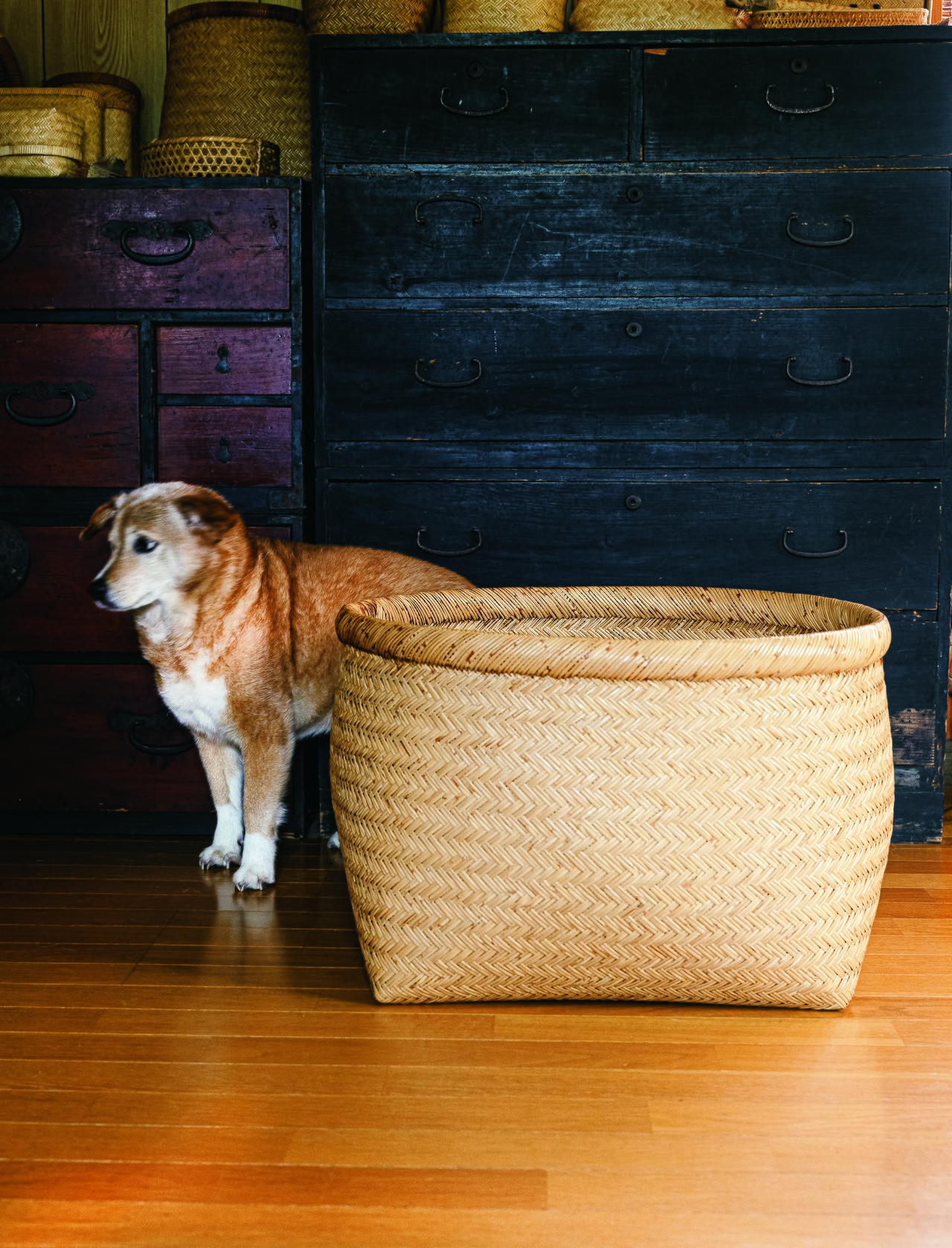
Shibata’s dog Chako watches over an oboke basket, the final work that her mother created. (© Arimoto Yayoi)
Shibata and her fellow artisans face an uncertain road ahead in preserving Torigoe suzutake bamboo weaving. They will need to tap into unknown markets with novel products and build new networks of fans and supporters. It is unreasonable to expect them to go it alone, though. Government assistance in the endeavor will be a must, but average citizens must also realize they have a role to play in sustaining traditional handicrafts. One hopes that Shibata’s efforts will take root and bear fruit for Torigoe for another 1,000 years.
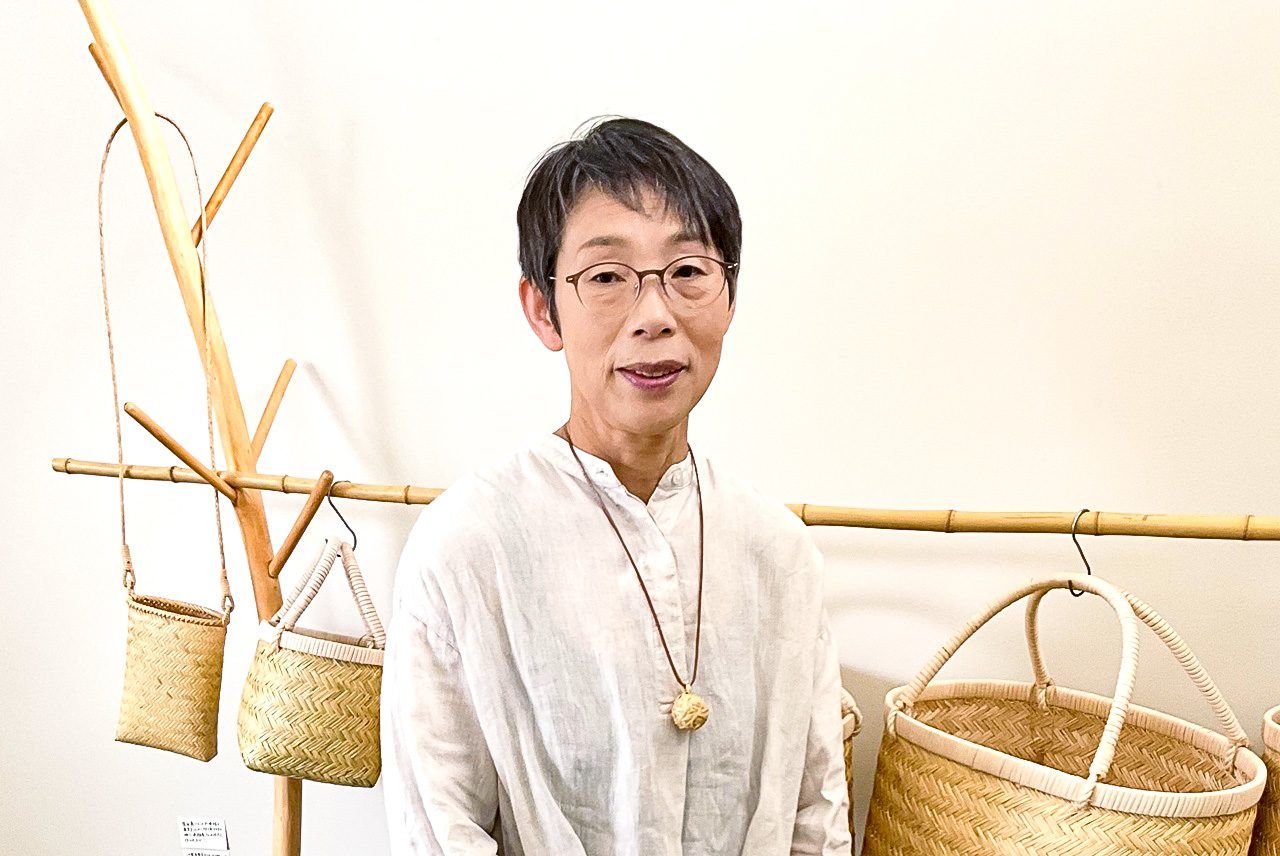
Shibata Megumi. (© Nippon.com)
Shibata Megumi’s Torigoe suzutake works can be viewed as part of a mingei (folk arts) exhibition running at the Toyama Prefectural Museum of Art and Design (July 13–September 23, 2024), the Nagoya City Art Museum (October 5–December 22, 2024), and the Fukuoka City Museum (February 8–April 6, 2025). For more information in Japanese, see the website at https://mingei-kurashi.exhibit.jp/outline.html.
(Originally published in Japanese. Photos by Arimoto Yayoi are courtesy of Hori Kēko, Little More 2024. Banner photo: Torigoe bamboo weaving artisan Shibata Megumi. © Arimoto Yayoi.)

